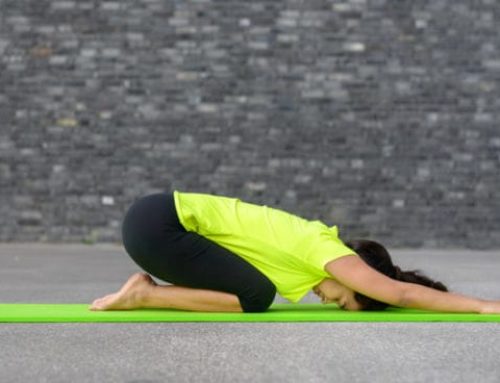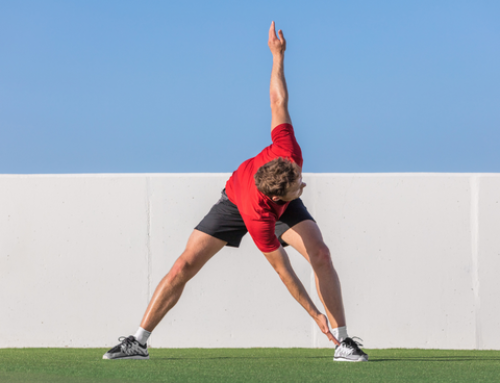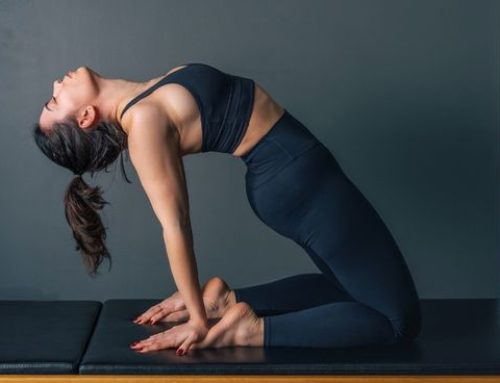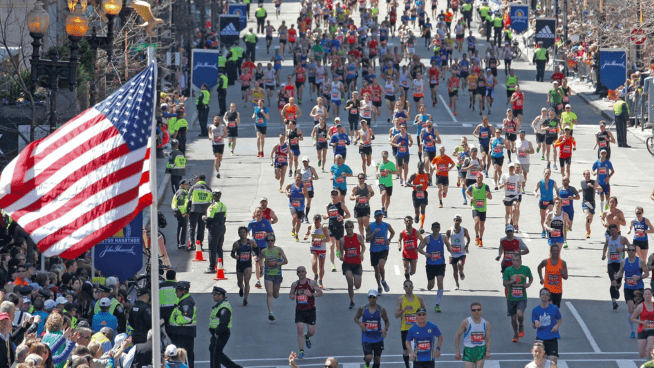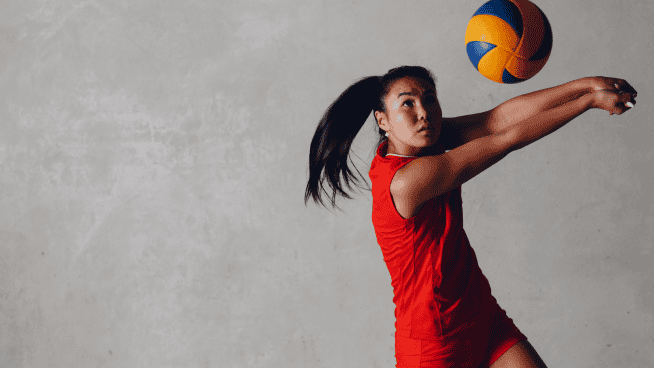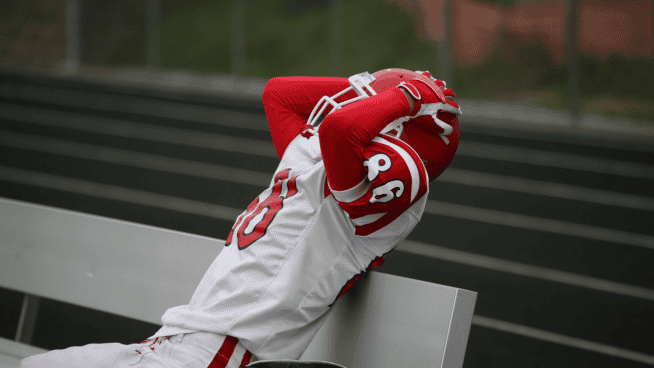Flexibility Fridays: Improve Back Mobility With Yoga

Every Friday during the month of February, Dana Santas, founder and director of Radius Yoga Conditioning (RYC), who has worked with more than 18 teams across the NBA, MLB, NFL, NHL and MLS, will guide you on how to improve your flexibility and improve your performance with yoga. View the first Flexibility Friday post.
Back tension is a common complaint among athletes. Above and beyond the issue of pain, a tense and immobile back, particularly through the mid to upper region, can have negative effects on sports performance and increase the risk of injury.
Let’s look at a throwing athlete. A pitcher with limited mid- to upper-back mobility needs to generate more power from his shoulder. Since his upper back lacks mobility, the motion of his scapula will be inhibited. His body will compensate, leading to improper form—the ultimate recipe for an eventual injury.
To improve your thoracic spine (mid- to upper-back) mobility, try the yoga Spine-Awakening Series. It will reduce back tension and improve trunk mobility, thus enhancing your sports performance and reducing the risk of injury. As a bonus, it will also improve your breathing and neuromuscular efficiency—the brain’s ability to communicate with your muscles for more accurate movements.
The Spine-Awakening Series is extremely versatile; and it only takes about a minute, so you can easily integrate it into your training program. Since the series focuses on natural movements of the spine, it can be performed daily at almost any point in a workout or as part of a pre-game warmup.
If you want the stretches to be effective, make sure to start each movement by leading with your tailbone. This is very important—it allows you to work on neuromuscular efficiency and actively counter the natural tendency for familiar—and possibly dysfunctional—movement patterns. Follow by moving your lower back, then middle back and upper back. Finish by bringing your head into the specified position. Focus entirely on the spine, keeping your shoulders, arms, hips and legs from getting involved, and resist the urge to move quickly.
Spine-Awakening Series
Begin on all fours in a neutral position with your back flat, hips over knees and shoulders over wrists. Keep your wrists, knees and ankles in line. Take a full inhalation and notice the natural curve of your spine. Exhale slowly and begin to move into the Angry Cat Pose by tucking your tailbone forward and raising your lower back upward to create a dome with your back. Tuck your head down and look at your thighs. Tighten your abs and draw your navel toward your spine, which signals the back muscles to release and further allow the back stretch (reciprocal inhibition).
Inhale and begin to move into the Frisky Cat Pose. Lift your tailbone toward the ceiling, creating a sway back as you move your spine into extension, finishing with your gaze forward. At this point, you should experience reciprocal inhibition, feeling your spinal muscles working to support you as your abdominal muscles relax and are stretched.

From Left: Neutral Spine; Angry Cat Pose; Frisky Cat Pose
Photo: bleacherreport.com
Dana Santas, E-RYT, ACSM-cPT, is the founder and director of Radius Yoga Conditioning (RYC), an international yoga training and consulting business offering customized sport- and athlete-specific yoga programs. Specializing in serving pro athletes, Santas has worked with more than 18 teams across the NBA, MLB, NFL, NHL and MLS. RYC is accessible to athletes, coaches and teams through numerous formats, including Skype/Facetime sessions and customized team training. Her work has been featured in Sports Illustrated, on MLB.com, the NHL Network, Fox Sports, WebMD, CNNRadio and elsewhere. For more information, visit radiusyoga.com.
RECOMMENDED FOR YOU
MOST POPULAR
Flexibility Fridays: Improve Back Mobility With Yoga

Every Friday during the month of February, Dana Santas, founder and director of Radius Yoga Conditioning (RYC), who has worked with more than 18 teams across the NBA, MLB, NFL, NHL and MLS, will guide you on how to improve your flexibility and improve your performance with yoga. View the first Flexibility Friday post.
Back tension is a common complaint among athletes. Above and beyond the issue of pain, a tense and immobile back, particularly through the mid to upper region, can have negative effects on sports performance and increase the risk of injury.
Let’s look at a throwing athlete. A pitcher with limited mid- to upper-back mobility needs to generate more power from his shoulder. Since his upper back lacks mobility, the motion of his scapula will be inhibited. His body will compensate, leading to improper form—the ultimate recipe for an eventual injury.
To improve your thoracic spine (mid- to upper-back) mobility, try the yoga Spine-Awakening Series. It will reduce back tension and improve trunk mobility, thus enhancing your sports performance and reducing the risk of injury. As a bonus, it will also improve your breathing and neuromuscular efficiency—the brain’s ability to communicate with your muscles for more accurate movements.
The Spine-Awakening Series is extremely versatile; and it only takes about a minute, so you can easily integrate it into your training program. Since the series focuses on natural movements of the spine, it can be performed daily at almost any point in a workout or as part of a pre-game warmup.
If you want the stretches to be effective, make sure to start each movement by leading with your tailbone. This is very important—it allows you to work on neuromuscular efficiency and actively counter the natural tendency for familiar—and possibly dysfunctional—movement patterns. Follow by moving your lower back, then middle back and upper back. Finish by bringing your head into the specified position. Focus entirely on the spine, keeping your shoulders, arms, hips and legs from getting involved, and resist the urge to move quickly.
Spine-Awakening Series
Begin on all fours in a neutral position with your back flat, hips over knees and shoulders over wrists. Keep your wrists, knees and ankles in line. Take a full inhalation and notice the natural curve of your spine. Exhale slowly and begin to move into the Angry Cat Pose by tucking your tailbone forward and raising your lower back upward to create a dome with your back. Tuck your head down and look at your thighs. Tighten your abs and draw your navel toward your spine, which signals the back muscles to release and further allow the back stretch (reciprocal inhibition).
Inhale and begin to move into the Frisky Cat Pose. Lift your tailbone toward the ceiling, creating a sway back as you move your spine into extension, finishing with your gaze forward. At this point, you should experience reciprocal inhibition, feeling your spinal muscles working to support you as your abdominal muscles relax and are stretched.

From Left: Neutral Spine; Angry Cat Pose; Frisky Cat Pose
Photo: bleacherreport.com
Dana Santas, E-RYT, ACSM-cPT, is the founder and director of Radius Yoga Conditioning (RYC), an international yoga training and consulting business offering customized sport- and athlete-specific yoga programs. Specializing in serving pro athletes, Santas has worked with more than 18 teams across the NBA, MLB, NFL, NHL and MLS. RYC is accessible to athletes, coaches and teams through numerous formats, including Skype/Facetime sessions and customized team training. Her work has been featured in Sports Illustrated, on MLB.com, the NHL Network, Fox Sports, WebMD, CNNRadio and elsewhere. For more information, visit radiusyoga.com.

